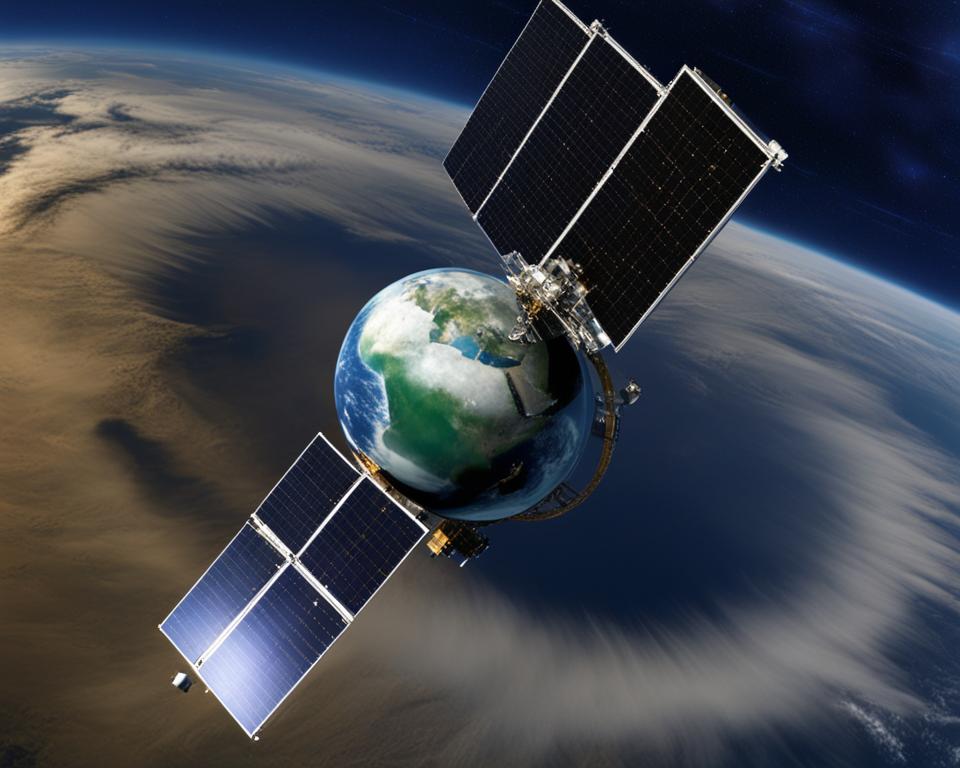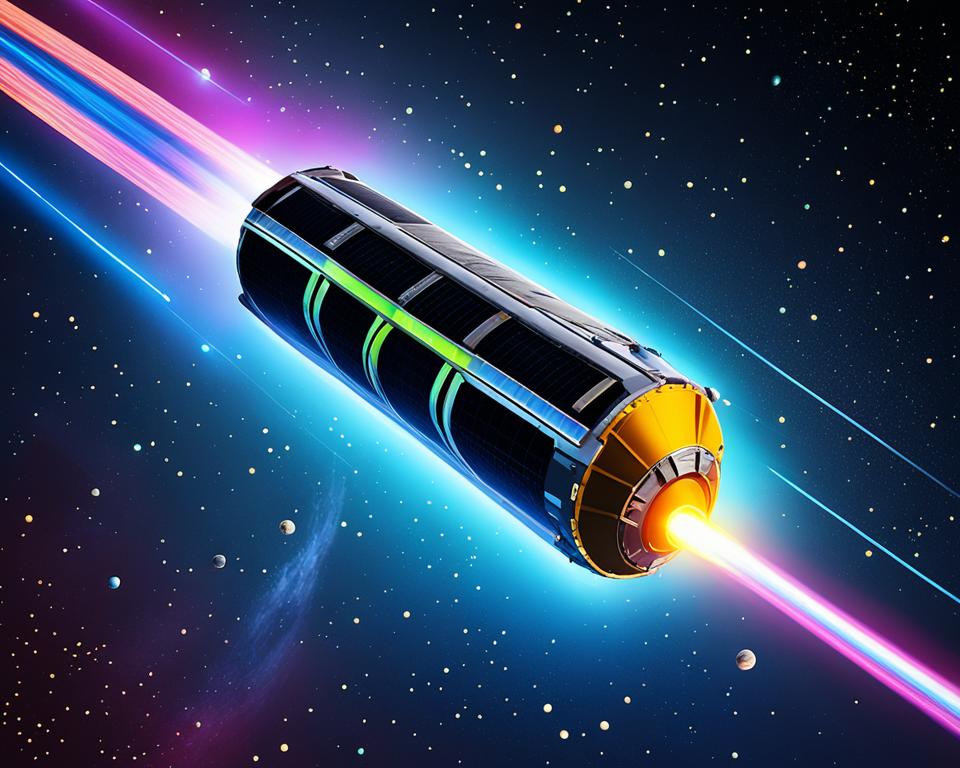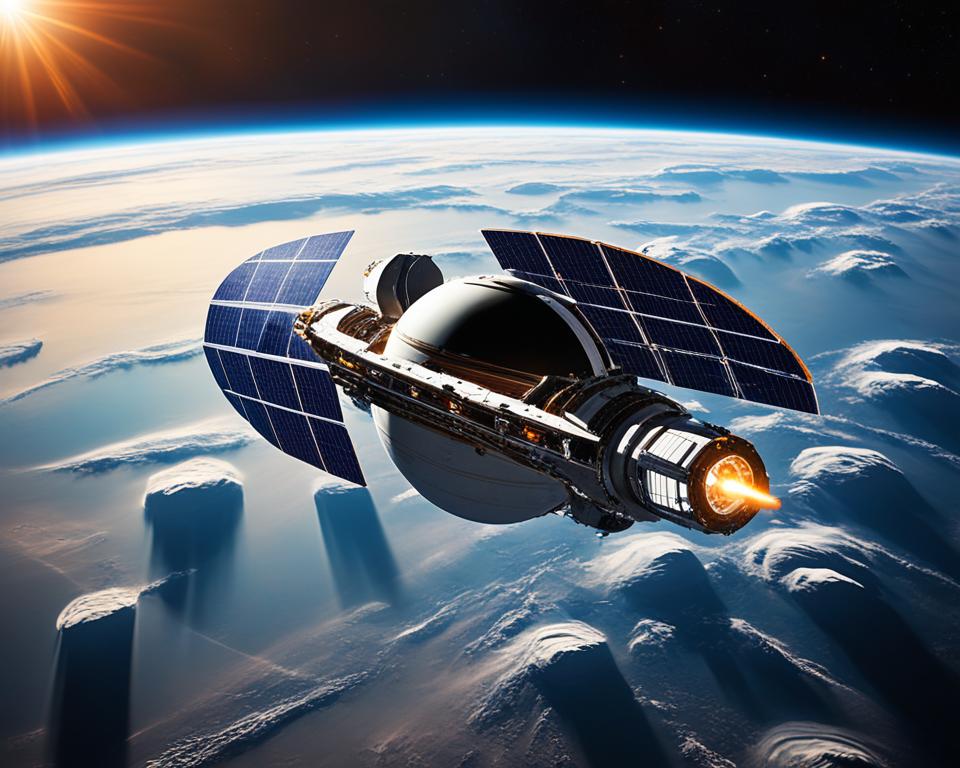Adverts
A space research has advanced rapidly since the launch of the Sputnik satellite in 1957. Innovations in aerospace have enabled humans to reach the moon, establish space stations in orbit, and conduct studies of the Earth, the solar system, and interstellar space. Many technologies developed for space exploration also have applications in our daily lives.
Adverts
Main points of this article:
- A space research has advanced since the launch of Sputnik in 1957.
- Space exploration has resulted in technologies used in our daily lives.
- O Artemis Program vision return to the moon and the lunar colonization.
- O Space Launch System It is the largest rocket ever built.
- A Gateway will be a new lunar space station.
- O future of space exploration promises new discoveries.
Aerospace Technologies and Innovations Used in Everyday Life
Space exploration has resulted in the development of technologies that have been adapted for use in our daily lives. These technologies include:
- Water filter: The water filter created by NASA in the 1960s is used in water filters for cleaning swimming pools, ensuring cleaner and healthier water.
- Enriched artificial milk: NASA has discovered that omega-3 is essential for the health of astronauts during space missions. This discovery resulted in the enrichment of artificial milk formulas with omega-3, present in infant formulas around the world.
- Cell phone camera technology: NASA's research into improving space camera sensors has resulted in the smartphone camera technology we have today. Now, we can capture special moments with quality and clarity.
- Rubber from astronaut helmets: The rubber used in astronaut helmets, which ensures safety and protection during space missions, is also used in the manufacture of running shoes. This special rubber minimizes impact and provides greater comfort during physical activity.
- NASA Pillows: The memory foam pillow developed by NASA gave rise to the famous “NASA pillows”. This foam adapts to the shape of the body, providing a more comfortable and relaxing sleep.
- Safer and longer lasting tires: Tires developed for probes sent to Mars are safer and more durable due to the extreme conditions of the red planet. This technology is also used in commercial car tires on Earth, providing greater safety on the roads.
These are just a few of the aerospace technologies that have been adapted and applied in our daily lives. Innovation and advancement in the aerospace sector bring significant benefits to society, making our lives more practical, safe and comfortable.
Adverts
NASA's water filter
“Space exploration has given us incredible technologies, such as NASA’s water filter, which is now widely used in swimming pool cleaning systems around the world. It’s an example of how innovation in the aerospace sector directly impacts our daily lives.”
The Artemis Program: Return to the Moon and Lunar Colonization
O Artemis Program, inspired by Greek mythology that names moon goddesses, is NASA's new space venture that aims to return to the Moon and begin a long-term process of lunar colonization. The program plans to send astronauts to the Moon starting in 2024 and build a lunar base by 2028. The base will be located in the region of the lunar south pole due to the availability of sunlight for generating energy. From the Moon, astronauts will be able to test technologies needed for future missions to Mars, investigate remaining mysteries about the Moon and learn more about our planet and the universe.
NASA is preparing to return to the Moon with the Artemis Program, which will take astronauts back to our natural satellite and allow long-term lunar exploration and colonization. This new space mission will open doors to new scientific discoveries and technological advances.
With the goal of advancing our technological capabilities, the Artemis program aims to develop and test technologies critical to future space missions, including the exploration of Mars. These technologies include improved propulsion systems, new landing techniques, and self-sustaining life support capabilities.
Benefits of Lunar Colonization
- Development of lunar infrastructure: Lunar colonization will allow the construction of permanent infrastructure on the Moon, including bases and facilities that will serve as launch pads for future space missions.
- Resource exploration: The Moon has a variety of resources, including water ice in its polar craters. Lunar colonization will enable the exploration of these resources, which could be vital to supporting long-term space missions.
- Scientific advances: Research conducted on the Moon during colonization will provide new insights into the formation of the solar system, the history of Earth, and the development of life on other planets.
- Preparing for missions to Mars: Lunar colonization will serve as a test environment for the development of technologies and strategies needed for manned missions to Mars.
The Artemis Program represents a significant step forward in space exploration and the search for answers to some of the most profound questions about the universe. Through this ambitious mission, humanity seeks to expand our horizons, inspire future generations and explore the mysteries beyond Earth.
| Phases of the Artemis Program | Description |
|---|---|
| Artemis 1 | Unmanned mission to test the Space Launch System and the Orion crew module in lunar orbit. |
| Artemis 2 | First manned mission, carrying out a lunar test flight. |
| Artemis 3 | First mission with a manned landing on lunar soil. |
| Artemis 4-9 | Future missions aiming to establish a sustainable presence on the Moon. |

Phases of the Artemis Program
The Artemis Program will be developed in several phases, each playing a fundamental role in the process lunar colonization. Starting with unmanned missions, the program will progress to manned missions and ultimately establish a sustainable human presence on the Moon.
Artemis 1: Test of the Space Launch System and Orion Crew Module
The first phase of the Artemis Program is the Artemis 1 mission. This mission will be unmanned and will aim to test the Space Launch System and the Orion crew module in lunar orbit. These tests will be essential to ensure the safety and efficiency of future manned missions.
See too:
Artemis 2: First manned mission with lunar test flight
The second phase of the program will be marked by the Artemis 2 mission. It will be the first manned mission of the Artemis Program and will carry out a lunar test flight. On this mission, astronauts will have the opportunity to experience the conditions of deep space and test the technologies needed to land on the Moon.
Artemis 3: First mission with a manned landing on lunar soil
The third phase of the Artemis Program is the Artemis 3 mission. This mission will be historic, as it will mark the first manned landing on lunar soil since the Apollo program. The astronauts will be tasked with exploring the lunar surface, conducting scientific experiments, and collecting essential data for future missions and the establishment of a lunar base.
Upcoming Missions and Expansion of the Artemis Program
By 2030, six more Artemis Program missions are planned, each with its own specific objective in the process of lunar colonization. These missions include building a lunar base, establishing a routine exploration program, searching for natural resources, and preparing for future missions to Mars. The Artemis Program represents a new era of space exploration, bringing the possibility of scientific advances, discoveries, and a better understanding of our place in the universe.
The Largest Rocket Ever: Space Launch System (SLS)
The Space Launch System (SLS) is the largest and most powerful rocket ever built, surpassing those used in the Apollo Program. It will be responsible for taking astronauts into space and will be used in the Artemis Program for missions to the Moon and, in the future, to Mars. The SLS is taller than a 30-story building and has an estimated cost of US$12.5 billion. The astronauts will travel in the Orion crew module, which has a conical design and will be the spacecraft for round-trip journeys to the Moon.
The technology behind the Space Launch System is truly impressive. Its payload capacity is over 100 metric tons, allowing it to transport essential equipment for space exploration. It consists of several stages, each driven by powerful engines that provide the force needed to overcome Earth's gravity and accelerate to space speeds.
The SLS is a remarkable achievement in space engineering and represents a significant advancement in rocket launch technology. Its ability to carry astronauts and large payloads will pave the way for space exploration beyond the Moon, paving the way for future missions to Mars and beyond.
Benefits of the Space Launch System:
- Load capacity greater than 100 metric tons.
- Manned trips to the Moon and beyond.
- Potential for future missions to Mars.
- Advanced and powerful technology.
The SLS is a key part of the Artemis Program and represents a significant leap forward in space exploration. With its impressive payload capacity and unmatched power, the Space Launch System is poised to propel humanity to new frontiers and unlock the mysteries of the universe.
| Feature | Description |
|---|---|
| Height | Bigger than a 30-story building |
| Weight | Approximately X tons |
| Load Capacity | Greater than 100 metric tons |
| Cost | Approximately US$12.5 billion |
Gateway: A New Space Station
The Apollo missions' Orion command module will not be used to land on the Moon. Instead, a lunar lander will be connected to a space station called Gateway, which will orbit the Moon.
A Gateway It will serve as a mandatory stop for astronauts before proceeding to the lunar landing. This space station will provide astronauts with the resources necessary for the lunar mission.
After completing their tasks on the Moon, the astronauts will return to the Gateway and, later, the Orion command module will return to Earth.
| Gateway Benefits | Description |
|---|---|
| Resource 1 | Gateway Feature 1 Explanation. |
| Resource 2 | Gateway Feature 2 Explanation. |
| Resource 3 | Gateway Feature 3 Explanation. |
The Future of Space Exploration and Beyond
The Artemis Program is an important step towards future of space exploration. In addition to enabling lunar colonization, it will enable the development of technologies necessary for trips to Mars. A space research will continue to advance, driven by engineers and scientists around the world working on new inventions and discoveries. Space exploration helps us better understand the universe, our neighboring planets, and even Earth.
Conclusion
Space exploration has been a journey of discovery and technological advancement since the launch of Sputnik in 1957. The Artemis Program represents the next phase of that journey, with the return to the moon and lunar colonization as a goal. The technologies developed for space exploration also have applications in our daily lives, improving our quality of life and driving scientific progress.
O future of space exploration promises to unravel the mysteries of the universe, advance space technology and allow us to learn more and more about our place in the cosmos. With the Artemis Program, the conclusion lunar exploration is getting closer, opening the doors to new missions and research that will further expand our knowledge of space.
By following the latest news in space research and the achievements of the Artemis Program, we can envision an exciting future full of possibilities for space exploration. Continued advancement in this field will take us not only to the Moon, but also to Mars and beyond, transforming the way we understand the universe and our own existence.
FAQ
What is space research?
Space research is a scientific field that studies outer space, including Earth, other planets, stars, galaxies, and the entire universe. It involves collecting data and conducting experiments to better understand the cosmos and expand our knowledge of space.
What are the innovations in the aerospace sector?
The aerospace industry has been responsible for many technological innovations that have been adapted for use in our daily lives. Some examples include the water filter developed by NASA for cleaning swimming pools, the artificial milk formulas enriched with omega-3 discovered by NASA, the camera technology for cell phones based on NASA research, the rubber used in astronaut helmets, the viscoelastic pillow foam developed by NASA, and the safer and more durable tires for probes sent to Mars.
What is the objective of the Artemis Program?
The Artemis Program is a NASA initiative that aims to return to the Moon and begin a long-term process of lunar colonization. The program plans to send astronauts to the Moon starting in 2024 and build a lunar base by 2028. In addition, the program will allow testing of technologies needed for future missions to Mars and investigating remaining mysteries about the Moon.
What are the phases of the Artemis Program?
The Artemis Program will be developed in several phases. The first missions will be unmanned, such as Artemis 1, which will test the Space Launch System and the Orion crew module in lunar orbit. Artemis 2 will be the first manned mission, performing a lunar test flight, and Artemis 3 will be the first mission with a manned landing on lunar soil. By 2030, six more Artemis Program missions are planned to be launched, each with a key role in the lunar colonization process.
What is the Space Launch System (SLS)?
The Space Launch System is the largest and most powerful rocket ever built, surpassing those used in the Apollo Program. It will be responsible for taking astronauts into space and will be used in the Artemis Program for missions to the Moon and, in the future, to Mars. The SLS is taller than a 30-story building and has an estimated cost of US$12.5 billion.
What is Gateway?
The Gateway is a space station that will orbit the Moon and will be a mandatory stop for astronauts before proceeding to land on the Moon. It will be attached to the lunar lander and will provide resources necessary for the mission. After completing their tasks on the Moon, the astronauts will return to the Gateway and then return to Earth in the Orion crew module.
What is the future of space exploration?
O future of space exploration promises to unlock the mysteries of the universe, advance space technology and allow us to learn more about our place in the cosmos. In addition to enabling lunar colonization, the Artemis Program will also pave the way for future missions to Mars, boosting scientific progress and increasing our understanding of the universe.
Source Links
- https://museuweg.net/blog/inovacoes-do-setor-de-exploracao-aeroespacial-que-voce-usa-no-dia-a-dia/
- https://www.ufmg.br/espacodoconhecimento/descubra-como-a-nasa-planeja-voltar-a-lua/
- https://noticias.r7.com/tecnologia-e-ciencia/fotos/descubra-9-itens-do-cotidiano-projetados-com-tecnologia-da-nasa-23082018




